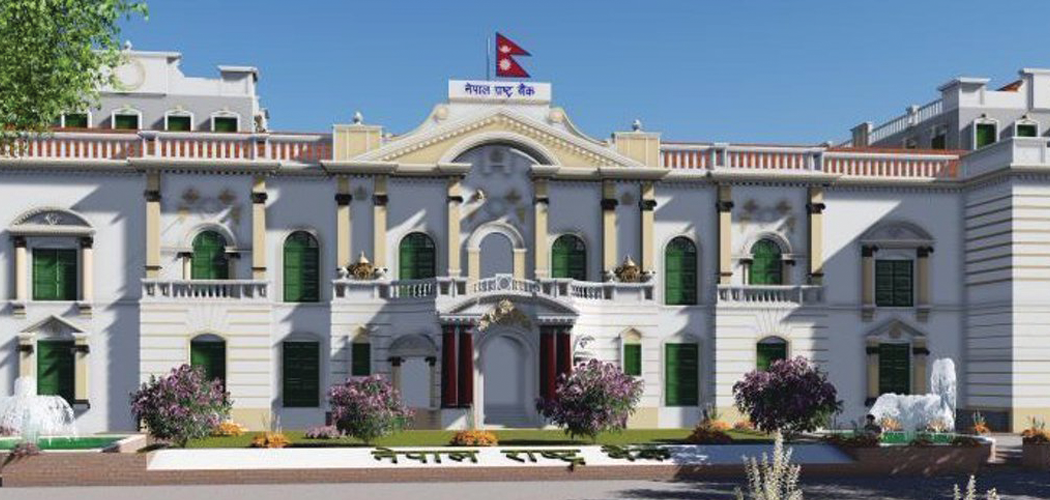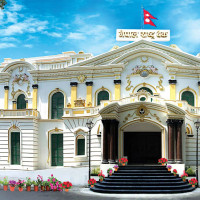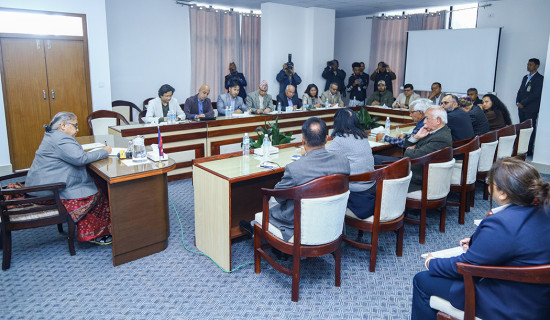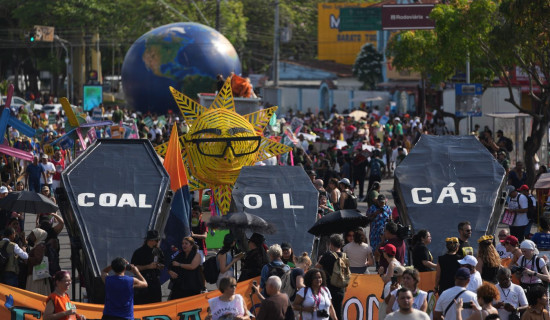- Monday, 17 November 2025
No change in policy arrangement
By A Staff Reporter,Kathmandu, Nov. 30: Nepal Rastra Bank has made public the first quarterly review of the monetary policy for the current fiscal year 2024/25 without making any change in the existing policy arrangements.
Reviewing the first quarter of the monetary policy for the current fiscal year, the NRB said that it has continued the cautious and flexible monetary policy stance without any change in policy arrangement.
The NRB has given continuity to the existing policy rate of monetary policy at 5 per cent, the deposit collection rate with the lower bound of the interest rate corridor at 3 per cent, and the bank rate with the upper bound of the interest rate at 6.5 per cent.
According to the NRB, the cash reserve ratio and statutory liquidity ratio have also been kept unchanged.
The NRB said that the continuation of the monetary policy direction will further support the expansion of economic activities while maintaining price stability and external sector stability, thereby helping to achieve the economic growth target set by the government of Nepal.
The government has set a target to achieve economic growth of 6 per cent and to tame inflation at 5.5 per cent in the current fiscal year.
The cautiously accommodative stance of the monetary policy has been continued to support economic activities given the comfortable level of foreign exchange reserves and low inflation, it said.
Due to the increase in remittance inflows, the foreign exchange reserves held in October are sufficient to support the import of goods and services for 14.6 months.
The NRB estimated that the foreign exchange reserves will remain comfortable for the remaining period of the current fiscal year, based on the expectation that the number of Nepalis going abroad for employment will increase and the remittance inflows will be high.
With petroleum product prices remaining stable in the international market, it is expected that there will be no further pressure on the prices of non-food items.
The NRB has estimated that the annual average inflation for the fiscal year 2024/25 will remain within the range of 5 per cent.
The y-o-y consumer price inflation stood at 4.82 per cent in mid-October 2024 compared to 7.50 per cent a year ago.
Food and beverage inflation stood at 7.18 per cent whereas nonfood and service inflation stood at 3.49 per cent during the review months. During the same period in the previous year, the price indices of these groups had increased by 8.48 per cent and 6.85 per cent respectively.
"While food inflation in India remains high, the risk of supply chain disruptions due to geopolitical tensions in the Middle East and South Asian countries and the escalating Russia-Ukraine war remains high, these issues will create pressure on consumer prices inflation, said the NRB.
According to the National Disaster Risk Reduction and Management Authority, the heavy rains and floods in the last week of September caused economic losses of about Rs. 46 billion.
The government is expected to spend significant amounts on infrastructure maintenance, including roads and reconstruction after the natural disasters, which will put some pressure on public finance management, said the NRB.
However, it is expected that the expenditure on physical infrastructure construction will significantly help in making other sectors of the economy dynamic and will also increase the demand for bank loans for investment.
















